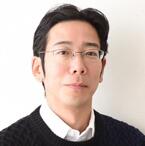Invited Speaker---Dr. Takehito Kato

Dr. Takehito Kato, Associate Professor, National Institute of Technology, Oyama College, Japan
Dr. Takehito Kato is an associate professor in mechanical engineering in Oyama college of National Institute of Technology, Japan. He received his Ph. D in 2007 at Kyushu Institute of Technology, Japan. Then, he had been a researcher in Sumitomo Chemical Co., Ltd. during 2007-2012. His current research focuses on morphology control of organic-inorganic hybrid phase structure and energy conversion devices based on organic-inorganic hybrid materials. Especially, now, his research group is focusing on the medical photo sensor, the photovoltaic cell, the thermal electrical conversion device. He has published several international peer-reviewed journals and attended various national and international conferences exceed 100. Furthermore, he has published over 60 patent applications.
Speech Title: Highly efficient and fully printable bulk heterojunction thin-film solar cells based on dispersed nano-C60 and a semiconducting polymer
Aims: Organic bulk heterojunction thin-film solar cells have advantages of low manufacturing cost, light weight, and mechanical flexibility. The photoactive layers of these devices are commonly composed of p-type semiconducting polymers as the electron donor and n-type fullerene derivatives as the electron acceptor [1]. However, fullerene derivatives are air-sensitive after dissolution in some solvents, so alternative non-air-sensitive electron acceptors are required. Herein, we investigated TiO
x, C60, and a mixture of the two (hybrid material) as an electron acceptor for the photo active layer of bulk heterojunction thin-film solar cells.
Methods: The solar cell structure was as follows: ITO/electron transport layer/photo active layer/hole management layer/organic electrode [2]. The photo active layer consisted of a polythiophene derivative as the electron donor and TiO
x, C60, or a mixed material as the electron acceptor. In addition, we used a Bead Mills system (LABSTAR-MINI, Ashizawa Finetech Ltd.) to prepare the precursor solution with dispersed C60 for fabricating the photo active layer. The resulting current density-voltage characteristics were measured using a direct-current voltage and current source/monitor under illumination with AM 1.5G.
Results and conclusions: When TiO
x, C60, or the mixed material was used as the electron acceptor, solar cell performance was clearly observed. The mixed material composed of TiO
x and C60 as an electron acceptor exhibited the highest short-circuit current density value of the materials tested. Herein, we discuss the obtained results in terms of the morphology of the photo active layer.
References
[1] J. You et al. Nat. Commun., 4, 1446 (2013)
[2] T. Kato et al., J. Vis. Exp., 119, e54923 (2017)



